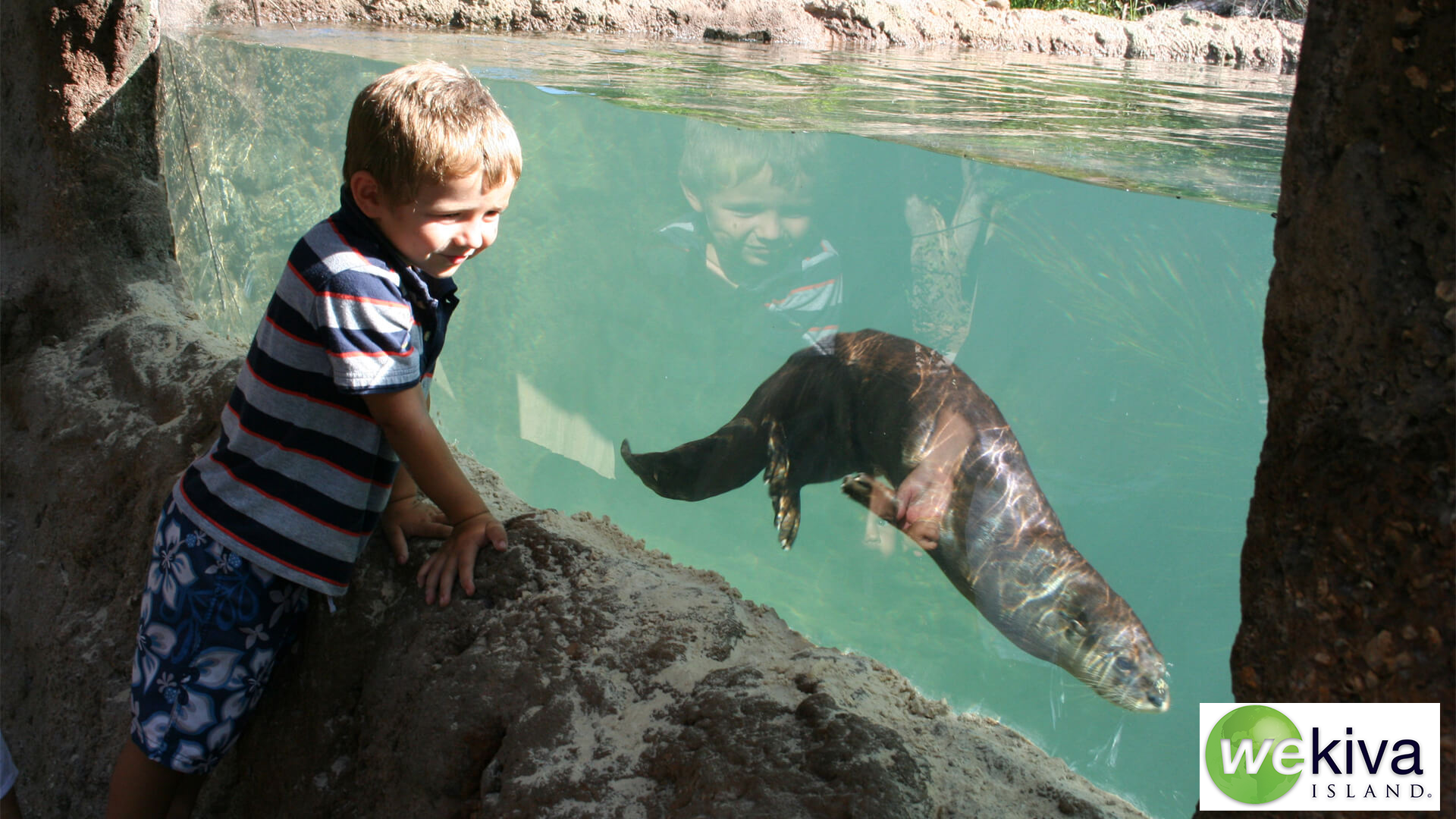
River otters have long slender bodies, short limbs, and short flat heads with whiskers, used to detect prey in water. Their back legs and tail are used to propel them through the water.
Our river otter habitat is generously sponsored by Wekiva Island.

They can be found in streams, lakes, ponds, wetlands, coastal shorelines and marshes. As an otter dives into the water in search of food, bubbles can be seen escaping their fur. This phenomenon is due to the fact that otters have two layers of fur on their coats: the undercoat and the guard hairs. The undercoat is the layer closest to their bodies, and the place where the air is being trapped. The guard hairs protect, and are the waterproof layer helping keep the undercoat from getting wet. Otters take care to groom themselves, keeping their fur in good condition. River otters are carnivores, mainly feeding on fish, frogs, crustaceans and occasionally a bird or small mammal. River otters live and rest in dens. They often move into former beaver dens.

Otters spend just as much time out of the water as they do in the water. If you don't see our otters in their pool, check the other two windows at the exhibit. They may be napping somewhere in the shade between pool laps!

Erin
River otters's streamlined bodies are built for swimming and diving, and they can stay underwater for up to eight minutes!
North America
Fresh water and costal marine habitats (rivers, lakes, marshes)
3–4 ft with 1–2 foot tail | 5–14 kg (11–30 lbs)
Amphibians, fish, crustaceans, small mammals, birds
American alligator, American crocodile, large land mammals
Swimming ability and warning vocalizations
2–3 young per litter
Least Concern
Up to 13 years
